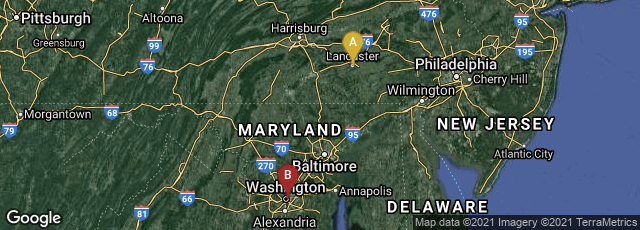The Binding Department—Forwarding Room. Women may be the majority of the workers; many machines are being used.
The G.P.O. used this Bullock perfecting press for all book runs over 20,000 copies, and printed 500,000 books per year on this single press.
Binding Department—Sewing Room on the left and Ruling Room on the right. Ruling machines on the right are connected to steam power by belts.
Statistics of the bindery department are on the left; a huge embossing press is illustrated on the right.
This image of the Electrotype and Stereotype room by H. H. Nichols is one of the best and clearest images in the book.
This is one of two images of the Printing Department—folding room. Here we see folding being done both by machine and by hand. This job appears to have been done mainly by women.


A: Lancaster, Pennsylvania, United States, B: Washington, District of Columbia, United States
Some of the largest industrial printing concerns that developed in the second half of the 19th century were government printing facilities in France, Vienna, and Washington, D.C. For the U.S. facility an excellent account is Robert Washington Kerr's 1881 History of the Government Printing Office, (at Washington, D.C.) with a brief record of the public printing for a century, 1789-1881. The volume was not published by the Government Printing Office, but instead by the Inquirer Printing and Publishing Co. of Lancaster, PA. My copy bears a presentation inscription from Kerr on its title page, and a note by the recipient, John E. Burton, that he received the book from Kerr in 1893. The second edition has a new preface and a leaf of errata, neither of which are in the first edition.
Kerr's book offers perhaps the best illustrated 19th century account in English of one of the largest industrial printing offices. The G.P.O. was created by congressional joint resolution (12 Stat. 117) on June 23, 1860. It began operations March 4, 1861, with 350 employees. Prior to that date the U.S. contracted out all its printing.
The details Kerr provides of the binding enterprise of the G.P.O., which expanded rapidly and became extensively mechanized in the twenty years from the foundation of the facility in 1861 to 1881, are of special interest. We learn on p. 124 that during that period the bindery expanded from 46 men and women to 576. The number of machines in the bindery expanded from 9 to 175. The number of rolling machines expanded from 2 to 21, the number of cutting machines from 2 to 20, the number of standing presses from 4 to 36. By 1881 they had installed 13 wire sewing machines, but most significantly, all thread sewing was still being done by hand, as effective book sewing machines such as the Smyth Number 3, did not go into operation until 1886. Based upon the number of people employed in the bindery, this aspect of the G.P.O. was by far the most labor intensive.
Significantly the G.P.O. produced a wide variety of blank and ruled books for government use. To create the ruled books, such as ledgers, they used large ruling machines to rule sheets of paper before they were folded and bound.
On p. 80 we learn that in 1881 the G.P.O. was operating 60 printing machines. This was an increase from 26 machines when the U.S. moved into the G.P.O. building in 1861. The G.P.O's most significant single machine for book work was the Bullock perfecting press illustrated on p. 82, on which 500,00 volumes were printed each year--all books where the run was 20,000 or over. Note that the term "printing machine" was an English idiom; in the U.S. mechanized printing devices, as distinct from hand presses, were either called power presses or simply presses, as they are today.
According to the list on p. 83-84 the GPO operated the following power presses in 1881:
1 Bullock Perfecting Press.
1 Allen Patent Envelope Press.
3 Hoe Cap Cylinder Presses.
6 Hoe Super-Royal Cylinder Presses.
19 Hoe Double Medium Cylinder Presses.
12 Adams Double Medium Bed and Platen Presses.
4 Adams Medium Bed and Platen Presses.
3 Cottrell & Babcock Two-Revolution Cylinder Presses.
3 Cottrell & Babcock Cap Cylinder Presses.
1 Cottrell & Babcock Four-Roller Cylinder Press.
7 Cottrell & Babcock Double Medium Cylinder Presses.
1 Low-pressure 150-horse-power [steam] Engine.
"The number of hands employed in the Press Room is as follows: 1 Foreman, 1 Assistant, 1 Register, 1 Messenger, 37 pressmen, 5 apprentices, 54 laborers, paper wetters, etc., and 106 lady feeders."
Kerr devotes little attention to typesetting, showing only an illustration of large hand-typesetting department, with all typesetting done by men. If any experimentation with typesetting machines was occurring at the G.P.O. at this time Kerr made no mention of it.
Harrison, James. L. 100 GPO Years, 1861-1961: A History of United States Public Printing. Washington: U.S. G.P.O., 1961.